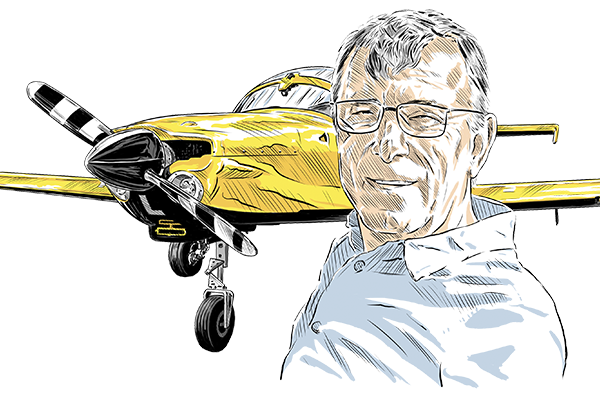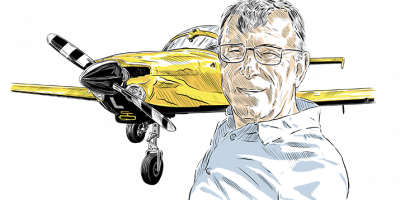Let me start this month’s Accident Analysis by saying what a privilege it is to write for FLYER magazine. I have been extraordinarily lucky to enjoy a fantastic career in General Aviation, military, and airline flying over the last 40 years. I am now spending more of my time instructing within the GA world, in the hope that I can pass on some of my experience to pilots who take part in this magical arena of General Aviation.
This month’s article focuses on the area of Weight and Balance, and looks at an example where things went badly wrong – resulting in serious injury but fortunately without any fatalities. I have to admit that in my early days of GA flying, I don’t recall weight and balance being considered at all: I flew Cessna 172s with four people on board without any concern about how much fuel was on board. In recent times, weight and balance has rightly been brought to GA pilots’ attention, with emphasis placed on the matter during PPL training and the Skill Test.
In the first accident, a young and enthusiastic pilot received serious injuries after crashing a DA40 shortly after take-off.
Synopsis
The pilot was seriously injured when the aircraft stalled and then struck the ground shortly after take-off from a height of about 100-200ft. It had been loaded with five containers of de-icing fluid.One container, loaded in the front right footwell close to the flying controls, limited the control stick’s available forward movement.
The aircraft was near its maximum permitted take-off weight and aft centre of gravity limit when it departed. This, together with the limited control authority available, caused the accident.
History of the flight
ATC cameras recorded the aircraft commencing its take-off run and becoming airborne after about seven seconds. The aircraft’s wings were then seen to rock slightly. About five seconds after take-off the right wing was seen to drop and be recovered, followed immediately by the left wing dropping. The aircraft was by then in a descent from a height of about 100-200ft and continued in a left turn, hitting the ground to the side of the runway, about a third of the way along its length. The entire flight lasted approximately 12 seconds.
The aircraft was severely damaged in the impact, with the left wing and tail breaking off. There was also damage to the cockpit area with three of the de-icing containers having been ejected during the impact. Two containers remained in the aircraft, one in the front right footwell and another trapping the pilot’s left arm against the side of the cabin.
AAIB Investigation
The AAIB investigation found that during the accident flight the de-icing fluid container placed in an upright position in the front right footwell would have caused a significant restriction in the forward movement of the control stick at take-off.
It is possible that the absence of full and free movement was masked, as contact with the container was probably with the base, rather than the top, of the control stick. This might have given the impression that the stick had reached its natural full forward position, unrestricted by the container.
While the speed of the aircraft at rotation was not determined, based on the pilot’s comments it is possible that without adequate control input the aircraft would have become airborne at a speed below the correct rotation speed.
The restricted forward movement of the control stick would have made a corrective nose-down pitch input difficult or impossible. This is consistent with the incipient stall indicated by the wing rocking seen on the ATC video.
While the pilot had previously demonstrated his proficiency at stall recovery, the restriction caused by the container would have prevented him reducing the angle of attack to recover.
“Weight and balance has rightly been brought to GA pilots’ attention, emphasising it during PPL training and the Skill Test”
It is possible that the reduction in power recorded on the Engine Control Unit was a reaction to his inability to otherwise control the high nose-up pitch attitude. Although the wing drop was initially recovered, the wing appears to have remained sufficiently stalled to drop again at the point the pilot appears to have applied power instinctively, in a further attempt to recover the situation immediately before impact.
Calculations made after the accident indicated it was possible to carry five containers in the positions described while remaining within the aircraft limits. However, as loaded, they were unsecured and could become a hazard in flight. The presence of the container in the right front footwell ultimately led to the accident.
Conclusion
The accident was caused by a control restriction preventing sufficient nose down pitch input to properly control the aircraft and avoid stalling. The restriction was caused by an unsecured de-icing fluid container placed in the front right footwell. Four other unsecured containers had been placed on seats and in the rear footwell, with the aircraft near its maximum permitted take-off weight and aft centre of gravity position.
Nick’s Analysis
The young instructor was fortunate to survive the crash, stalling the aircraft so soon after take-off. He had been asked to carry some large unsecured containers of de-icing fluid within the cockpit, most crucially within the footwell of the right forward seat. Not only did the loading of the containers place the aircraft’s centre of gravity towards the rear part of its envelope, the footwell container restricted the control column’s forward movement. Could any of these things happen to you during your flying?
It’s perhaps unlikely that a private pilot flying a club or shared aircraft would be put in such a situation as the instructor was being asked to carry such a load, but it’s not impossible. How would you handle such a request? Would your reaction be modified if you were offered a discounted rate to ‘help out’? Would you allow any items to be within the footwell of a control seat? Do you always secure items of baggage properly in the aircraft? Unsecured bags within a baggage compartment may shift during take-off or initial climb, leading to a sudden and significant change to the aircraft centre of gravity and affecting your control of the aircraft. They will also possibly cause injury in the event of a crash, just as unsecured baggage in a car would.
How can we protect ourselves against such problems? As a first thought, never assume that the number of seats on a light aircraft indicates how many people can be safely flown. All GA aircraft in general use at flying schools and clubs have a Maximum Take-Off Mass (MTOM), but it may well be more limiting than you think – there will almost certainly need to be a trade-off between a full cabin (and bags…) and full fuel.
Check the Weight and Balance information that will be included in the Pilots Operating Handbook (POH) or Aeroplane Flight Manual (AFM). Many electronic aids and apps are also now available for doing this on your phone or tablet. Don’t forget that you also have to consider performance for take-off, which is clearly a function of aircraft weight. Those performance calculations should include both runway length required and climb performance, both of which could be significantly affected by the high temperatures that the UK has enjoyed this summer!
Commercial flights must have a load sheet and take-off performance calculations for each and every flight. While mostly electronically produced these days, don’t be surprised to see paper versions in smaller commercial aircraft, often accompanied by a hard-working pilot armed with a ruler and pencil quickly working out whether the load distribution is within aircraft limits!
It should really go without saying that nothing should be placed around aircraft controls directly, nor in such a position where something might move (perhaps in turbulence) to where it should not be. On a slightly different note, I often see pilots flying with quite large kneeboards that could affect full control movement at a time when it might be required most. I suggest that kneeboards should be placed in a stowage or handed to a passenger for take-off and landing, and retrieved for use once safely airborne.
So to summarise with a few key points:
· Don’t assume that you can just fill the aircraft cabin with people and get away with it!
· Do a proper weight and balance check for each flight.
· Keep your controls free of any possible interference.






1 comment
Funnily enough I had a (very temporary) control restriction a couple of weeks ago caused by a clipboard – I’m now even more conscious about any items in the cabin. And Nick – congratulations on the appointment as Safety Editor! Seems a long time since Bruggen…